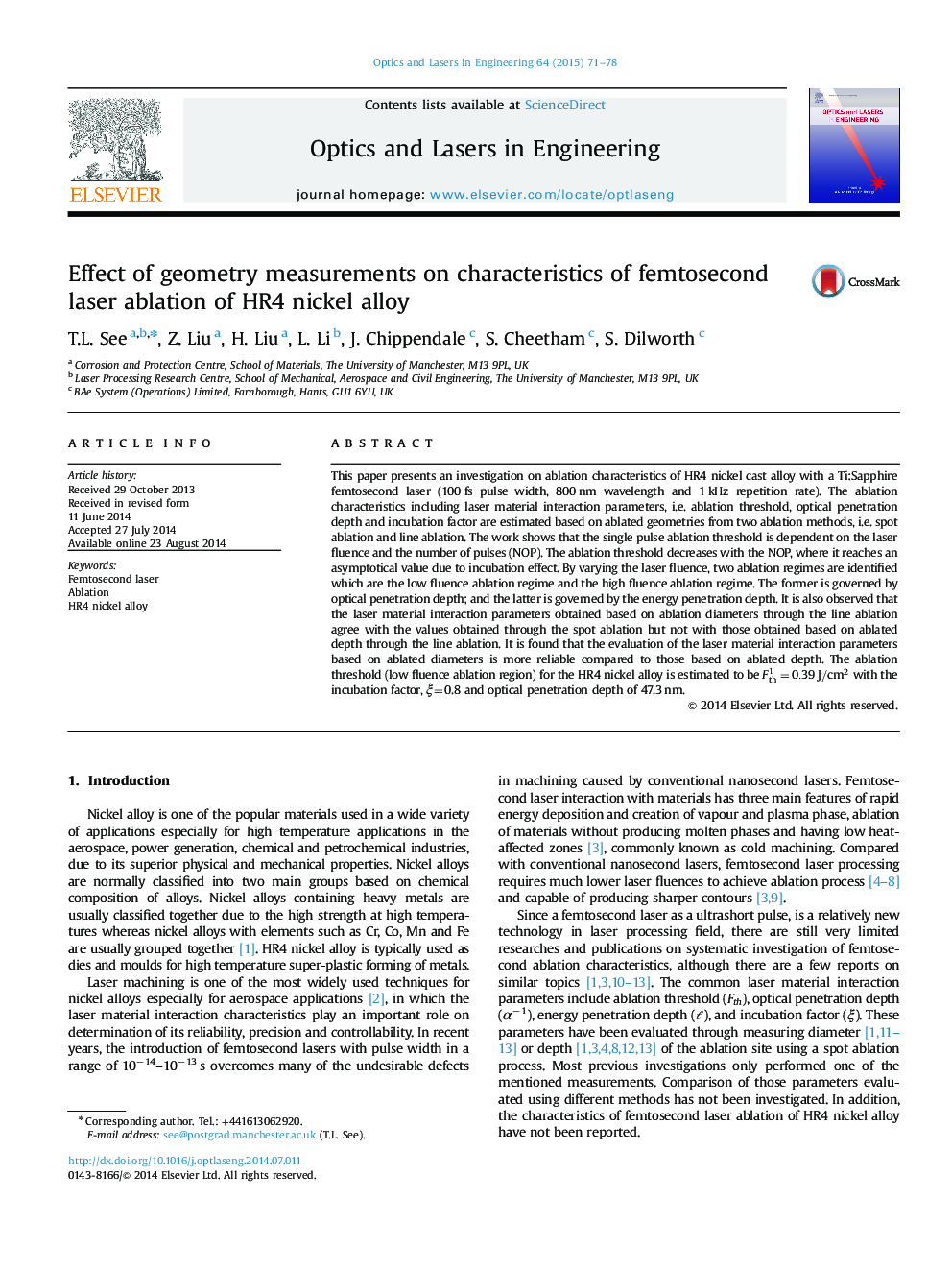| Article ID | Journal | Published Year | Pages | File Type |
|---|---|---|---|---|
| 734842 | Optics and Lasers in Engineering | 2015 | 8 Pages |
•Parameters evaluated using diameter measurement on line and spot ablation are agreed.•Larger Fth1 and ξ values are obtained using depth measurement on line ablation.•The diameter measurement is considered to be a more reliable geometry measurement.•The ablation threshold is dependent on NOP and is governed by incubation factor.•The parameters obtained are Fth1=0.39J/cm2, ξ=0.8, α−1=47.3 nm.
This paper presents an investigation on ablation characteristics of HR4 nickel cast alloy with a Ti:Sapphire femtosecond laser (100 fs pulse width, 800 nm wavelength and 1 kHz repetition rate). The ablation characteristics including laser material interaction parameters, i.e. ablation threshold, optical penetration depth and incubation factor are estimated based on ablated geometries from two ablation methods, i.e. spot ablation and line ablation. The work shows that the single pulse ablation threshold is dependent on the laser fluence and the number of pulses (NOP). The ablation threshold decreases with the NOP, where it reaches an asymptotical value due to incubation effect. By varying the laser fluence, two ablation regimes are identified which are the low fluence ablation regime and the high fluence ablation regime. The former is governed by optical penetration depth; and the latter is governed by the energy penetration depth. It is also observed that the laser material interaction parameters obtained based on ablation diameters through the line ablation agree with the values obtained through the spot ablation but not with those obtained based on ablated depth through the line ablation. It is found that the evaluation of the laser material interaction parameters based on ablated diameters is more reliable compared to those based on ablated depth. The ablation threshold (low fluence ablation region) for the HR4 nickel alloy is estimated to be Fth1=0.39J/cm2 with the incubation factor, ξ=0.8 and optical penetration depth of 47.3 nm.
